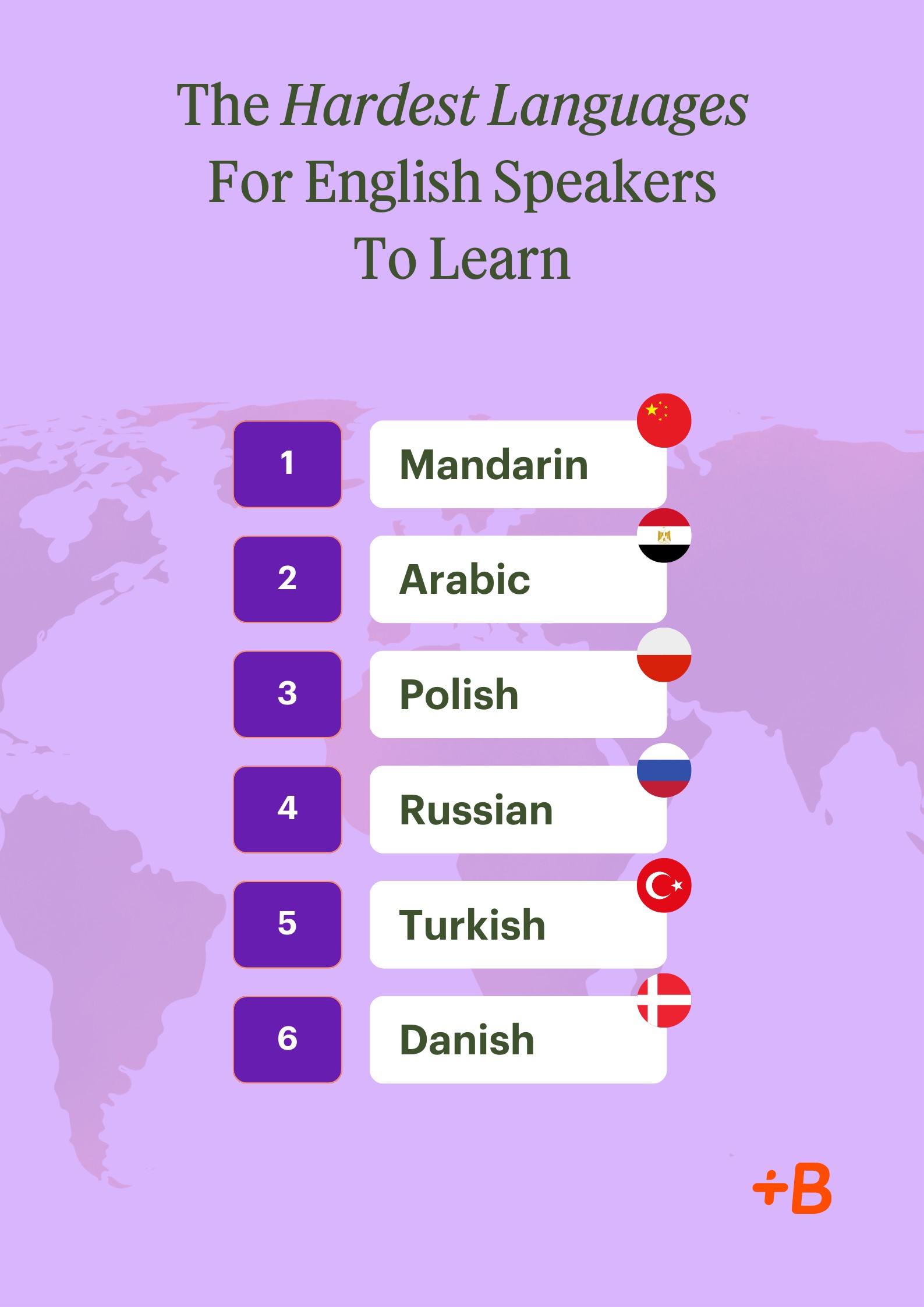Learning a new language can be a rewarding experience, but some languages present a steeper learning curve than others. For English speakers, certain languages pose unique challenges due to differences in writing systems, pronunciation, and grammatical structures. So, what is the hardest language to learn? Let’s delve into six languages that are widely considered the most difficult for English speakers to master.
 An infographic showing the six hardest languages to learn.
An infographic showing the six hardest languages to learn.
Decoding Difficulty: The Top 6 Hardest Languages
1. Mandarin Chinese: A Character-Building Challenge
Often cited as the hardest language to learn, Mandarin Chinese boasts the largest number of native speakers globally. Its complexity stems from its unique writing system, requiring memorization of thousands of characters, unlike the familiar Latin alphabet. Beyond characters, Mandarin’s tonal nature adds another layer of difficulty. Four distinct tones can alter a word’s meaning entirely, making pronunciation crucial for effective communication. Consider the word “ma,” which can signify “mother,” “horse,” “rough,” or “scold” depending on the tone used.
2. Arabic: Navigating a Non-Latin Landscape
Arabic, another of the world’s most spoken languages, presents its own set of challenges. Numerous regional dialects can differ significantly, making dialect selection a crucial first step. The non-Latin script, consisting of 28 letters, requires adapting to a new writing system. Reading is further complicated by the omission of most vowels in written words. Arabic’s unique sounds, some not found in English, and its grammar rules, such as verbs preceding subjects and the use of dual word forms, contribute to its difficulty.
3. Polish: Conquering Consonants and Cases
While less daunting than Mandarin or Arabic, Polish still presents a formidable challenge. Its consonant-heavy words, like “szczęście” (happiness), can be tricky to pronounce and spell. Grammatically, Polish features seven cases, adding complexity to sentence structure. However, the use of the Latin alphabet offers a degree of familiarity for English speakers. Learning Polish can be valuable, considering Poland’s growing economic importance in Europe.
4. Russian: Cyrillic Conundrums and Grammatical Gymnastics
Russian, employing the Cyrillic alphabet, introduces both familiar and unfamiliar letters. However, appearances can be deceiving, as some Cyrillic letters resemble Latin letters but have different sounds. For example, “B” in Cyrillic sounds like “V.” While Russian grammar, with its six cases, is slightly less complex than Polish, the omission of the verb “to be” in the present tense can confuse beginners. Consonant clusters also contribute to pronunciation difficulties. Despite its challenges, Russian’s political and cultural relevance makes it a worthwhile language to learn.
5. Turkish: Tackling Agglutination and Vowel Harmony
Turkish presents a unique linguistic concept: agglutination. Prefixes and suffixes are attached to words to convey meaning and direction, leading to exceptionally long verbs. Vowel harmony, where vowels change or are added for smoother pronunciation, adds another layer of complexity. Unfamiliar vocabulary, often of Arabic origin, further increases the difficulty. However, Turkish’s relatively few grammatical exceptions and straightforward spelling offer some respite. Learning Turkish provides a fascinating glimpse into agglutinative languages.
6. Danish: The Pronunciation Puzzle
While sharing similarities with easier Scandinavian languages like Norwegian and Swedish, Danish stands out due to its challenging pronunciation. Words often sound drastically different from their spellings. For instance, “mit navn er” (my name is) is pronounced “meet now’n air.” Mastering Danish pronunciation requires significant effort, making it harder than its Germanic counterparts.
Conclusion: Embracing the Challenge
While these six languages present significant challenges for English speakers, they offer immense rewards. From unlocking cultural understanding to expanding career opportunities, the benefits of language acquisition are undeniable. Choosing to learn one of these languages demonstrates dedication and a willingness to embrace a challenging yet fulfilling linguistic journey.